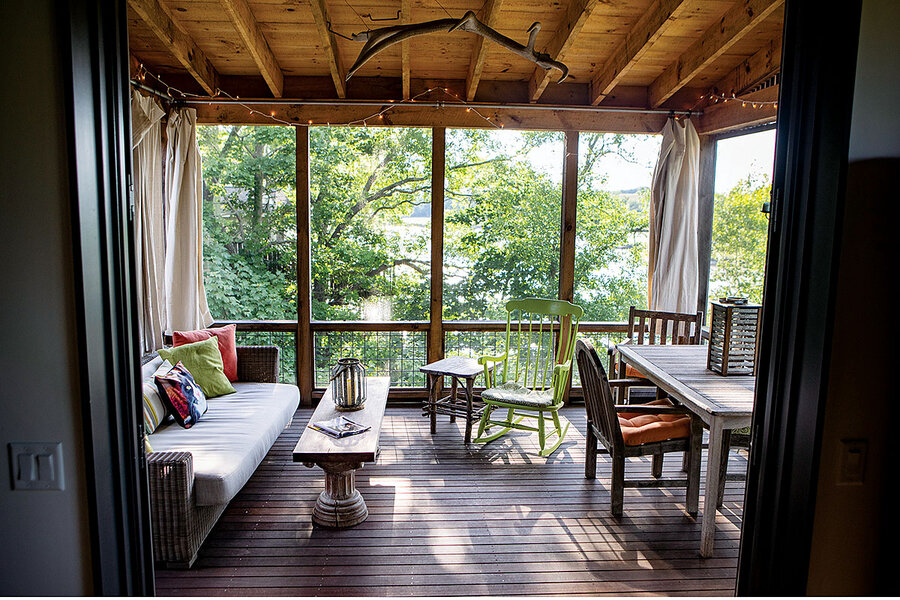A paean to the porch
Loading...
I grew up in my grandmother’s brick home in a leafy suburb of Washington. My mother and I navigated carefully around Gommy’s knickknacks – the china figurines and flowered teacups – that filled her seafoam-green living room.
My favorite spot was her screened-in porch that ran along one side of the house. We lived in that porch from spring into summer and early fall. It was furnished more informally, with a metal table and chairs at one end, a rocking chair in the middle (my mother’s favorite spot), and a glider at the other end.
We ate out there every evening – watching people walk home at the end of their workdays from the bus stop at the top of the road. We could hear the neighbors’ chatter next door when their windows were open, as they were only 15 feet away.
When sweltering, humid weather arrived in August, as it always did, air conditioners hummed in windows. The porch was almost too uncomfortable to manage then, but I would often go out there to sit in the darkness and listen to the night.
When it rained, I would lie on the glider, under its plastic cover, secretly alone, a small transistor radio in my grasp and hoping my favorite song of the moment would come on. I was safe and dry when the rain came in.
A screened porch is a room connected to nature: sheltering, but open to the world. One can still use it in rainstorms, still peer at a laptop screen on sunny days. I’ve mostly lived in places with mosquitoes and other annoying bugs, so decks and open-air patios don’t make as much sense to me.
I haven’t lived in that house full time since I left for college. But my love of porches endures. I’ve had a few modest ones since then. One was big enough for a small round table and chairs. It sat at ground level. The chipmunks loved to taunt my indoor cats, running back and forth right in front of their noses, safe outside the screens. My cat Charlie was especially entranced by them and would run back and forth with them, never tiring of the entertainment.
My brother-from-another-mother (my mom’s best friend’s son), John, is a porch aficionado, too. As children, our families vacationed together for a week every summer, returning to the same second-floor apartment, a two bedroom with a porch overlooking a small lake. Whenever we return to that favorite childhood area, we rent cottages based almost solely on their porches. Who cares about the inside? They must have a beautiful, comfy, screened-in porch.
A few years ago, my husband and I began talking about renovating our house. We called on an architect friend to help with the plans, mentioning that we wanted a porch our cats could enjoy. Not a judgmental man, he took us literally and designed a porch about 2-feet tall – for the cats!
We patiently explained that we wanted to use it, too.
I’m happy to report that we now live in a home with a beautiful screened-in porch. I was happy to place the designing of the house in my husband’s hands. I did insist on one thing: that it have a big porch. And so we do: We look out on a tidal river and salt marsh, where seabirds fish as the tide rushes in and out.
But whenever I hear crickets singing, I’m back on my grandmother’s porch.








